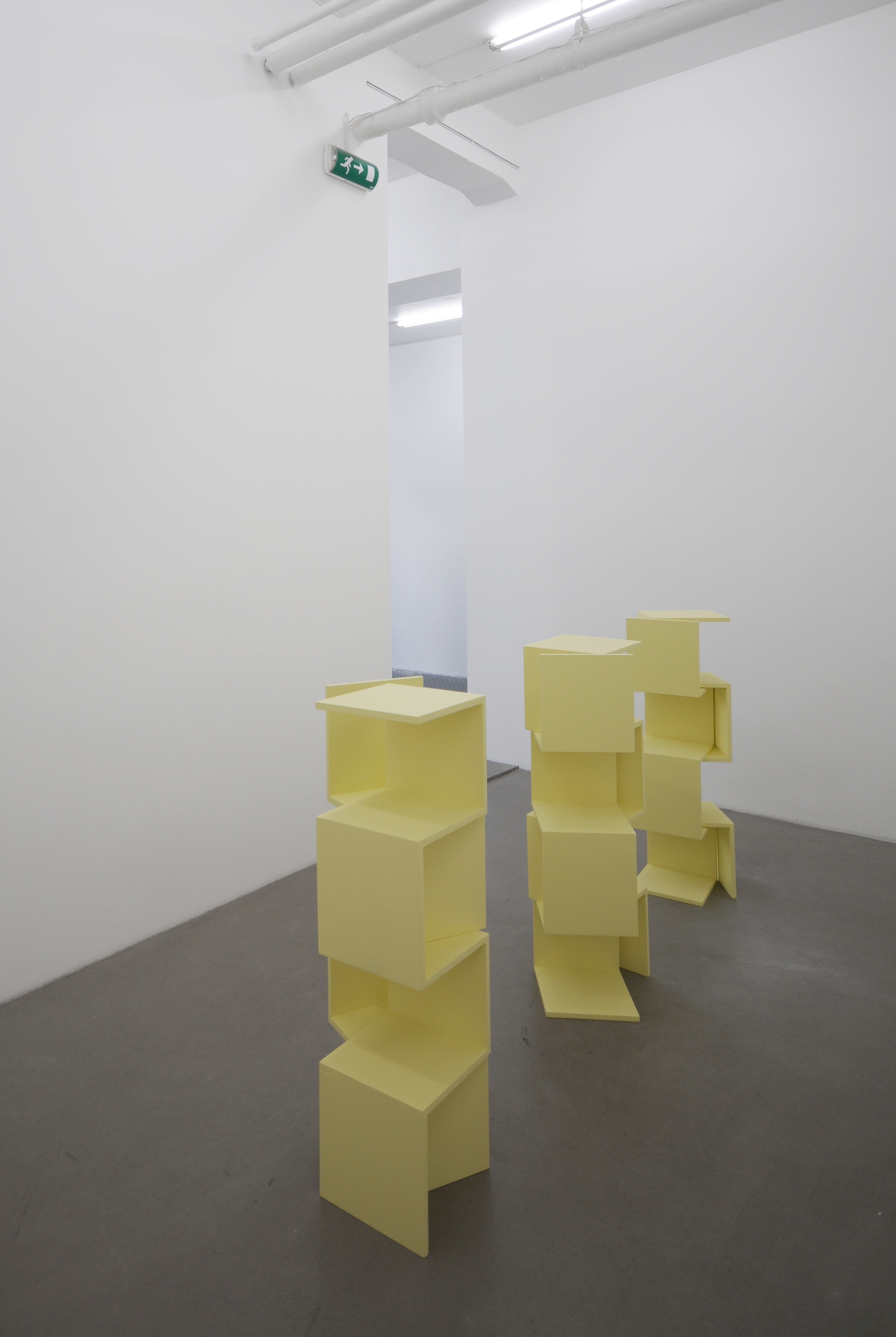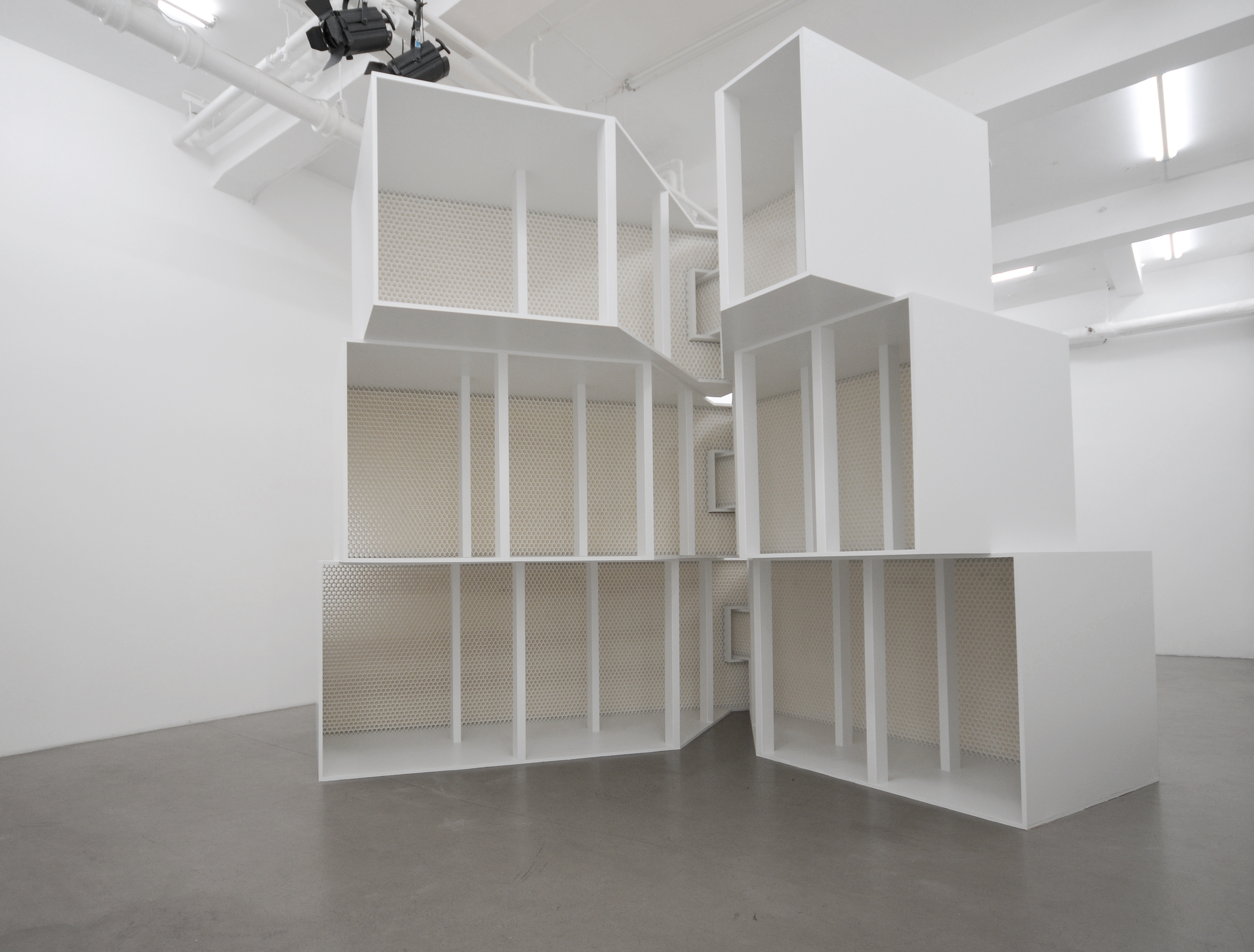Opening reception: Friday, 26 October, 7pm
Exhibition dates: 05 March – 11 April 2010
Artist: Marte Johnslien (NO)
Related events: Sunday August 24 12 am
In connection to the exhibition, 0047 Oslo will organize an artist talk & brunch with the artist open to the public on Sunday August 24 at 12 am.

Marte Johnslien, Plein soleil, 2008, Painted plywood, 120 cm x 47 cm x 55 cm x3, Photo: Marte Johnslien.




